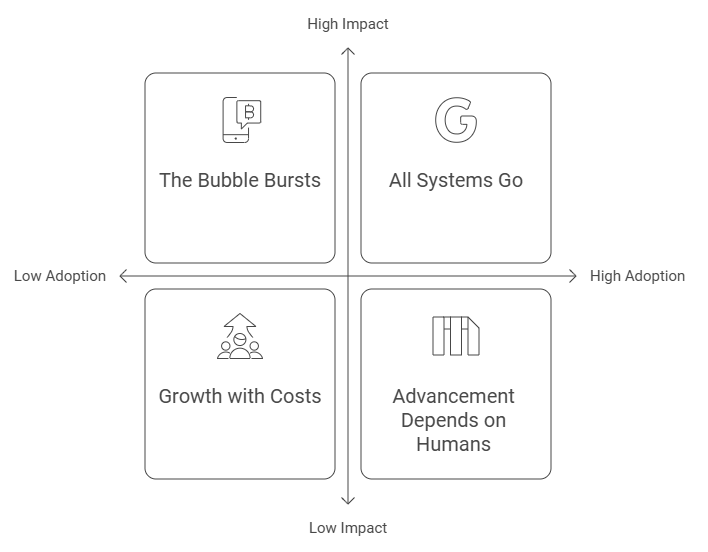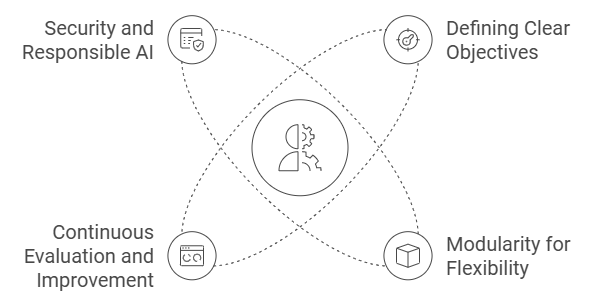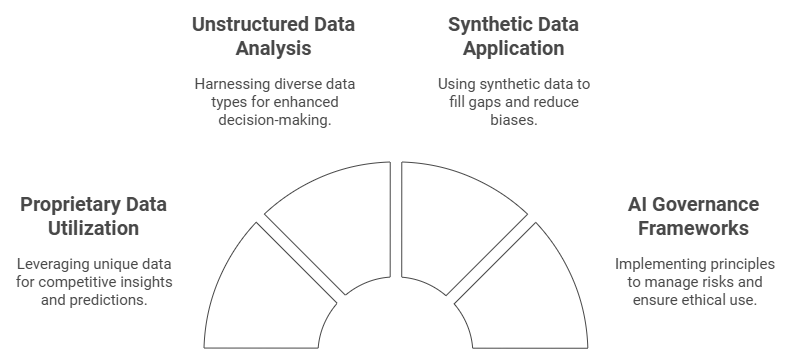Sharpening Your Generative AI Strategy: Future Scenarios and Best Practices
Insights from Deloitte, AWS, and Accenture
Generative AI (GenAI) has quickly moved from an intriguing technology to a business necessity with the power to reshape industries. But as the hype continues to grow, enterprises must question how to adopt GenAI and which strategic approaches will ensure its sustained value. Recent research and insights from Deloitte, AWS, and Accenture outline a roadmap to guide enterprises, offering four possible futures for GenAI adoption, practical best practices for implementation, and essential data-readiness recommendations.
Four Scenarios for Generative AI’s Business Future
According to Deloitte’s recent research, enterprises can expect GenAI to impact them in one of four ways by 2027. While not predictions, these scenarios aim to help businesses evaluate risks, challenges, and opportunities for a well-rounded GenAI strategy:
Growth with Costs
Enterprises increase GenAI adoption, pushing it into various business areas. Agents have become commonplace, automating intricate, open-ended tasks and reshaping job roles. Yet, some employees can see the technology’s expansion as intrusive. This scenario calls for strategies that balance technological gains with worker concerns to ensure smooth integration across departments.The Bubble Bursts
Here, GenAI fails to meet its high expectations, leading to disillusionment as inaccuracies in outputs impact critical decisions and limit operational gains. Workforce reductions amplify frustration, and businesses find themselves backtracking on AI investments. Organizations may need to rethink how they manage expectations and refine the technology’s applications to avoid dependency on underperforming AI solutions.Advancement Depends on Humans
Companies achieve success when they prioritize a clear strategy over rapid expansion. Many early adopters find that rushing to scale GenAI hinders its full potential. Success stories emerge from those who deploy GenAI with focus and pace, continually learning and adjusting their models to ensure effective and sustainable scaling.All Systems Go
In this scenario, GenAI powers a widespread creative and technological revolution. Interacting with other advanced fields, GenAI spurs economic growth, inspiring industries from robotics to biology. As barriers dissolve, enterprises that have built resilient GenAI foundations lead this innovation wave, positioning themselves as pioneers in a transformed economy.
Each scenario provides a framework for leaders to pressure-test their AI strategies, assess risks, and prepare for the evolving GenAI landscape.
Figure: Impact versus Adoption frameworks | Image Source: Building Creative Machines, 2024
Practical Steps for Building Generative AI Systems: AWS Best Practices
AWS has recently shared best practices to ensure GenAI’s success at scale. These guidelines focus on building effective, secure, and adaptable GenAI agents, irrespective of platform, allowing enterprises to bring flexibility and rigour to their AI systems. Key recommendations include:
Defining Clear Objectives: Companies should start by outlining the tasks GenAI agents will perform, using sample interactions to set accurate parameters. This aligns the agents’ functionality with the organization’s goals, creating a focused approach to data input and expected outcomes.
Modularity for Flexibility: Developing GenAI agents as modular, purpose-focused units enables better scalability and maintainability. AWS advises companies to focus on user experience clarity and link knowledge bases with robust documentation, allowing agents to collaborate efficiently and respond accurately.
Continuous Evaluation and Improvement: Businesses should establish clear performance metrics, such as task completion rates and response accuracy. Evaluation frameworks can include human oversight to ensure quality and reliability. AWS’s best practices emphasize observability and logging as essential to improving agent responses and overall performance.
Security and Responsible AI: Security remains paramount, with recommendations for secure authorization, encrypted data handling, and broader responsible AI standards to mitigate risks. Creating reusable tools and a ‘crawl-walk-run’ approach enables enterprises to build scalable systems without compromising data security or ethical standards.
These best practices provide a robust foundation for enterprises aiming to harness GenAI's potential, focusing on scalability and security for production-ready applications.
Figure: Guidelines for building genA systems | Image Source: Building Creative Machines, 2024
Ensuring Data Readiness for GenAI Success
Accenture’s research highlights a critical but often overlooked component of GenAI: data quality and readiness. Data is the backbone of GenAI, and without high-quality, proprietary data, enterprises risk missed opportunities and underwhelming results. Accenture’s insights stress that data-readiness strategies are paramount for maximizing GenAI’s impact:
Leveraging Proprietary Data for Value: GenAI is most effective when fueled by unique, proprietary data that provides competitive insights. For example, BBVA’s new digital sales model exemplifies how proprietary data can enable precise, high-value predictions and recommendations.
Tapping Into Unstructured Data: Unstructured data—like text, images, and video—holds significant untapped potential. Forward-thinking companies are already using AI to analyze complex data sources, as Fortune has done to streamline decision-making.
Synthetic Data for Gap Filling: Synthetic data can be a powerful tool to compensate for data shortages, addressing both cost and ethical challenges. When used carefully, synthetic data helps build AI models without the limitations or biases of real-world data.
Establishing Strong Governance and Responsible AI Principles: Data-driven risks like privacy issues and reputational concerns can accelerate in a GenAI-driven environment. Accenture advises companies to implement responsible AI principles and robust governance frameworks to mitigate these risks.
By aligning data strategies with GenAI initiatives, enterprises position themselves for success and unlock the full potential of AI-powered insights.
Figure: Data-readiness strategies to maximise GenAI’s impact | Image Source: Building Creative Machines, 2024
Why Enterprises Should Focus on a Resilient AI Strategy
GenAI has the potential to alter business landscapes across industries drastically. However, this transformation will only benefit organizations that invest in resilient and adaptable AI strategies capable of evolving alongside technological advances. Adopting a framework to explore future scenarios, applying best practices in AI system design, and ensuring data readiness are critical steps.
As enterprises face an increasingly AI-driven world, understanding these key strategies can determine whether they lead or lag in the next wave of innovation. This combination of strategic foresight, implementation rigour, and data preparedness can be a decisive advantage, allowing businesses to unlock GenAI’s full transformative potential in the years ahead.




